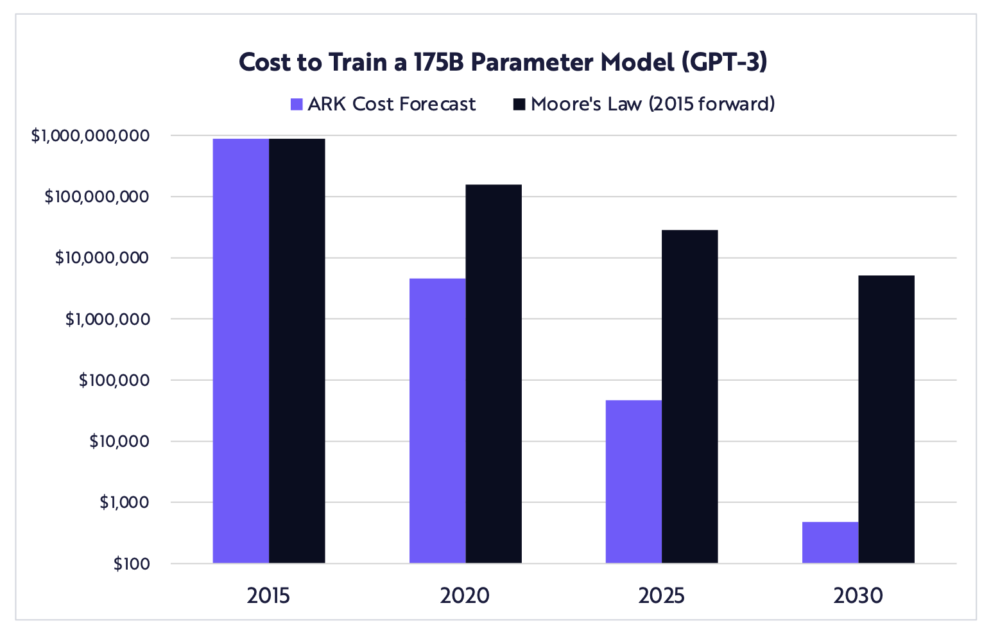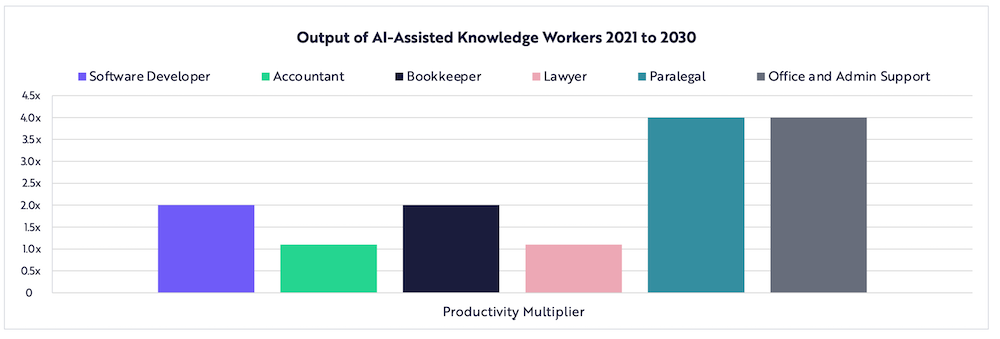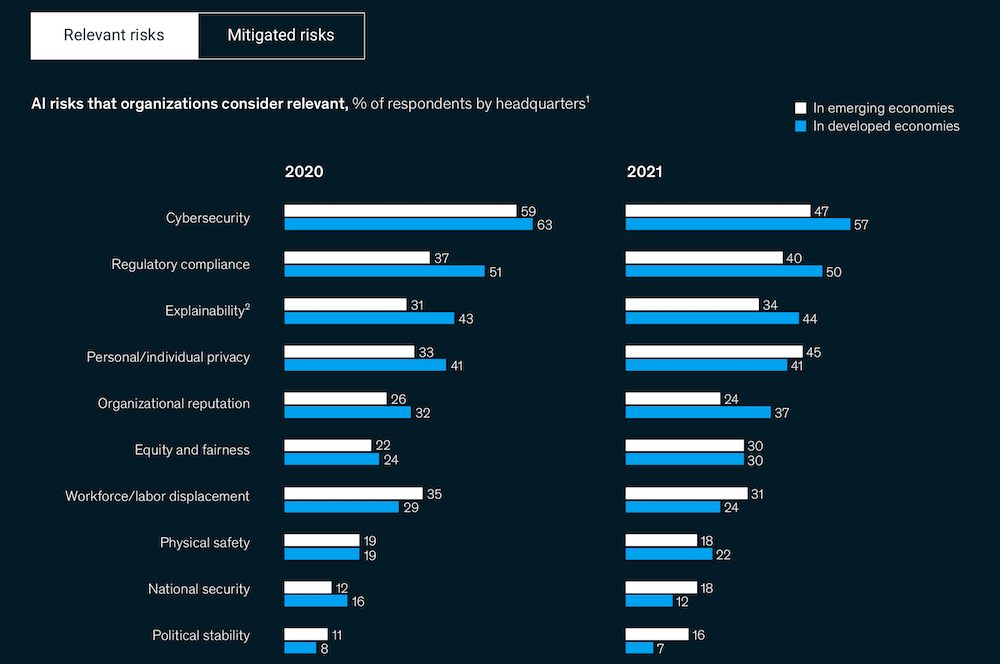
In the last week, two large studies have been published that assess the impact that AI is already having on companies and how that impact is not only going to grow but will skyrocket in the coming years.
The first of them, “Big Ideas 2022” prepared by ARK Invest, predicts not only a bright future for AI (“by 2030, companies in the sector will be able to generate 14 billion dollars a year in revenue and the productivity of workers will have skyrocketed 140%), but also points to other technologies that are expected a lot in the coming years, such as everything related to cryptocurrencies and decentralized finance (DeFi), gene editing, 3D printing or vehicles electric and autonomous.
The second, “The State of AI in 2021” prepared by Mckinsey shows a current picture of what is already happening in a sector that is slowly beginning to “mature”, with 56% of the companies surveyed stating that they have incorporated algorithms Artificial Intelligence in at least one key process for your business (compared to 50% the previous year). Some ideas shared in both reports paint a picture from which the following headlines are worth extracting:
Product development and marketing
As in previous years, the survey carried out by Mckinsey shows that the business functions that are benefiting most from the adoption of AI are those related to the development of products and services, marketing and sales.
In this sense, the most frequent use cases are the optimization of service operations, the improvement of products based on AI and the automation of contact centers.
On the other hand, the results of the study also suggest that the importance of AI in the bottom line of companies continues to grow. As stated by 27% of the companies surveyed (compared to 22% the previous year), at least 5% of their profits are attributable to the use of these algorithms.
The cost of training an AI algorithm is falling rapidly
GPT-3 is probably the best known artificial intelligence algorithm in the world and thanks to deep learning he has “learned” to perform all sorts of tasks, ranging from helping programmers write code, to creating new poems.
Researchers estimate that from 2015 to 2020, the cost of training an AI model the size of GPT-3 has fallen 65% each year, from an average of $875 million in 2015 to $4.6 million. of 2020. By the year 2030 the cost could become so completely negligible that it is estimated that researchers would need just over $500 to launch similar models.
The cost of training a model that had the 240 billion synaptic connections of a human brain, in this sense, would go from the 2,500 million dollars that it would cost today, to the 600,000 dollars in 2030, with year-on-year falls in the costs of the 60%.
Artificial Intelligence could increase the productivity of workers by increasing their performance by 140%
As a consequence, this cost reduction would allow the new algorithms to have a really significant impact on the productivity of workers.
ARK researchers give as an example the use of Codex, an algorithm that is capable of writing code from the natural language of people. For example, we can tell it: “draw a red ball that bounces on the screen” and the algorithm will write the precise commands to create a program that makes it possible.
At this time, Codex can complete 37% of these types of orders without problems but it is expected that over the years, this percentage will grow exponentially. By the year 2030, say the authors of this report, it is expected that artificial intelligence will have increased the production of knowledge workers around the world by 9% at an annual rate, from the 41 billion dollars that As a result of our work and effort, humans produce approximately 97 billion dollars in production of AI + human intelligence annually.
Security remains the great challenge to overcome
But regardless of the great possibilities that the use of this type of algorithm may present in the medium term, today the companies that have participated in the Mckinsey study agree when it comes to pointing out that risk management, especially those related to cybersecurity continues to be the main area for improvement.
In developed economies, the survey on the biggest risks faced by organizations has been relatively stable since 2020, although 57% (up from 63% last year) cite cybersecurity as a relevant risk for AI.
In emerging economies however, respondents report a more dramatic decline in the relevance and mitigation of several top risks. However, they also more frequently point to privacy as the most relevant risk when dealing with AI algorithms.






